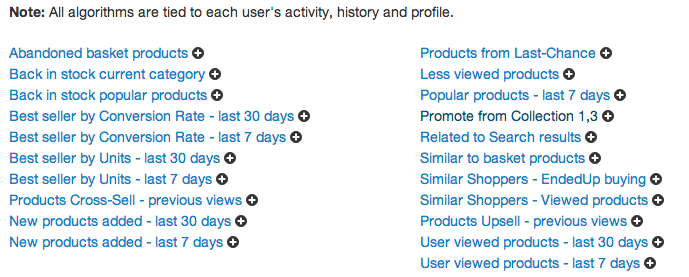The last two years, content personalization started to take hold in ecommerce. The promise of ecommerce personalization started 10 years ago at Amazo. Third party services make it easy and affordable for smaller websites to use it as well.
In 2014 even more content personalization will be present in ecommerce strategies. Along with marketing automation, it’s part of the trends in ecommerce marketing.
According to surveys, over 70% of consumers get frustrated when they visit and featured content, offers or ads don’t match their interests.
Getting started with ecommerce personalization
First of all, you need to decide over the main reason you consider personalization:
- increase conversion rate
- increase customer engagement
- build longterm relationships with your clients.
It’s important to know what is it because of the costs associated with relevant tactics. Probably you’ll choose a mix, which goes well with an end-to-end personalized marketing automation tool.
What parts of your shop can be personalized
Shortly, almost everything can be personalized to match customer interests. There’s always a balance between business interests (what to sell to make more money) and customers’ interests in buying. And those two things are not overlapping.
Website: Homepage
Best practices include:
- latest categories a specific user showed interest into;
- newest products added into the shop;
- sales and special offers;
- most purchased products;
Website: Category pages
Here merchandising is important. Showing on a top level row, the most purchased products that match current category, or a specific brand for whom you have a higher profit margin makes a lot of sense.
From our experience, recommendations from the first row influence sales by 60%.
Pay attention to filters: would be great if you could match the filter results with your recommendations.
Website: Product Pages
Product pages usually include 2 widgets of product recommendations. They should always match user interests in product like color, brand, size.
- similar products (upsell)
- cross-sell products
While similar products it’s easy to generate, for the cross-sell part can be an automated system to match a bag with shoes (complementary items) or the algorithms could handle a manual matching of categories. This is very useful at the beginning, when you don’t have lot’s of data to play with.
Email content personalization
There are two types of email content that can be personalized:
- simple text (use the name of your customer)
- content (images, products)
For the second one, content is personalized based on latest actions inside the shop or past purchases.
In newsletters, to increase the click rate it’s important to display relevant products, probably the ones that user showed high interest.
In transactional emails, also known as email retargeting you act based on a specific user status: abandoned cart, search retargeting, new user. All these can be related to a small group of products he was interested in. Here is very simple
Mobile app: push notifications and SMS/Text messages
Being about text messages, there are a few things to personalize here: name, very specific category or product. There are some great results with this messages on:
- reminders (expiration of special offers)
- cart abandonment
- legal things, like insurance expiration
Content personalization
Product recommendations
Personalized product recommendations may help shoppers discover products or services more quickly and boost ecommerce sales conversions.
Examples of product recommendations algorithms
There are some common algorithms that are used by everybody in their communication strategy. The thing that matters is the relevancy, the matching with customer interests.
- Related to search
- Similar shoppers also bought
- Most viewed products
- Popular within similar shoppers

Banners
Banners are also a good way to personalize user experience on your ecommerce store. Many of the actual banners promote current campaigns for brands or special promotions. These can be changed based on customer preferences in brands for example.
For example if you have two running campaigns for Nikon and Canon, a banner that targets Nikon fans can follow the user all around the site.
Best ways to increase conversion with personalization
The key of content personalization is to identify the user you want to target and to collect as much relevant data about him. Sources of data:
- purchase history
- onsite activity (categories visited, interested price-range)
- source of visit (if coming from special campaign)
- social media (is your fan on facebook?)
Mixing these together can bring you the data you need to provide an excellent personlized user experience. This tactic is very sensible, so it’s better to work only with professionals.
Sum Up
Personalization is a powerful marketing tactic that will allow online retailers to improve shoppers experience, while building long-term customer relationships, better communication and increased sales conversions.
